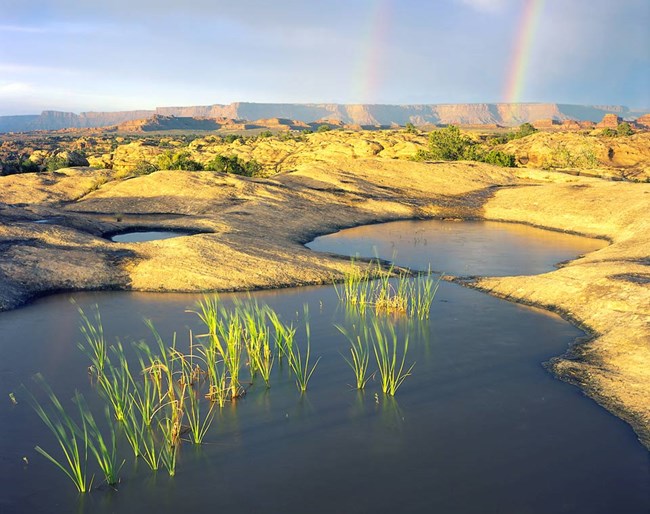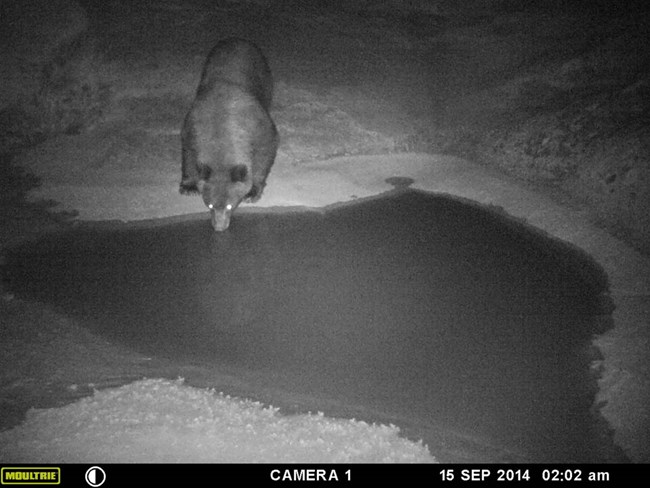Last updated: April 29, 2025
Article
Ephemeral Pools

NPS/Neal Herbert
Ephemeral pools, commonly called potholes, are natural sandstone basins. These pools collect rain water and sediment, forming tiny ecosystems with a collection of plants and animals adapted to life in the desert. Potholes range from a few millimeters to meters deep and even the smallest potholes may harbor microscopic invertebrates. Ephemeral means fleeting – these pools only last a short while before drying up or changing.
Extreme Survivors
To survive in a pothole, organisms must endure extreme changes in habitat. Surface temperatures can be 140 degrees Fahrenheit in summer and below freezing in winter. As water evaporates, organisms must move to larger pools or survive dehydration.

NPS Photo
Signs of Life
While these tiny ecosystems may seem unimportant, they can indicate the health of larger ecosystems around them. Potholes are also important to other animals and even people as a main water source. All types of wildlife, from bees to black bears, visit potholes to drink. Potholes near ancestral Puebloan settlements may have been used for farming, cooking, and drinking.
Protecting Potholes
A pothole is a unique habitat that is very easily disturbed. Pothole organisms are sensitive to sudden water chemistry changes, temperature changes and sediment input, as well as being stepped on, and being splashed out onto dry land. Human use of pothole water by swimming, bathing or drinking may change the salinity or pH of a pool drastically. More importantly, this change occurs suddenly, unlike the slow, natural changes to which organisms can adapt. Hikers should therefore avoid using water in potholes as well as walking through dry ones.
-
Inside Canyonlands: Potholes
Throughout Canyonlands, naturally occurring sandstone basins called "potholes" form tiny ecosystems inhabited by a surprising collection of animals. Join ranger Karen Henker for an introduction to these animals and some their remarkable adaptations.
- Duration:
- 4 minutes, 23 seconds

